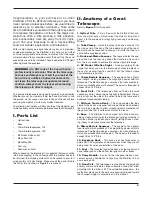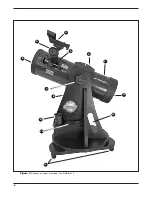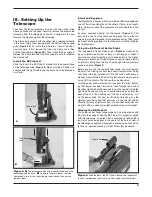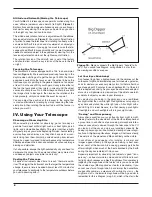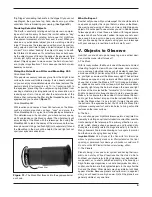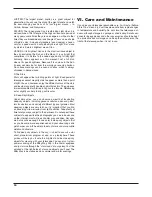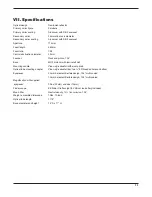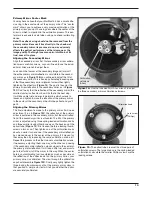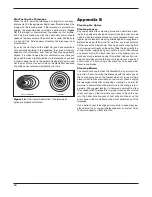
14
Star-Testing the Telescope
When it is dark, point the telescope at a bright star and accu-
rately center it in the eyepiece’s field of view. Slowly de-focus the
image with the focusing knob. If the telescope is correctly col-
limated, the expanding disk should be a perfect circle (
Figure
16
). If the image is unsymmetrical, the scope is out of collima-
tion. The dark shadow cast by the secondary mirror should
appear in the very center of the out-of-focus circle, like the hole
in a donut. If the “hole” appears off-center, the telescope is out
of collimation.
If you try the star test and the bright star you have selected is
not accurately centered in the eyepiece, the optics will always
appear out of collimation, even though they may be perfectly
aligned. It is critical to keep the star centered, so over time you
may need to make slight corrections to the telescope’s position
in order to keep the star in the center of the field of view. A good
star to point at for a star test is Polaris, the North Star, because
its position does not move significantly over time.
Appendix B
Cleaning the Optics
Cleaning Lenses
Any quality optical lens cleaning tissue and optical lens clean-
ing fluid specifically designed for multi-coated optics can be
used to clean the exposed lenses of your eyepieces. Never use
regular glass cleaner or cleaning fluid designed for eyeglasses.
Before cleaning with fluid and tissue, blow any loose particles
off the lens with a blower bulb. Then apply some cleaning fluid
to a tissue, never directly on the optics. Wipe the lens gently in a
circular motion, applying only very slight pressure, then remove
any excess fluid with a fresh lens tissue. Oily fingerprints and
smudges may be removed using this method. Use caution; rub-
bing too hard may scratch the lens. On larger lenses, clean only
a small area at a time, using a fresh lens tissue on each area.
Never reuse tissues.
Cleaning Mirrors
You should not have to clean the StarBlast 4.5’s primary mirror
very often, if ever. Covering the telescope with the dust caps on
the front opening and on the focuser when not in use will help
prevent dust from accumulating on the mirrors. When bringing
the telescope inside after an evening’s viewing it is normal for
moisture to accumulate on the mirror due to the change in tem-
perature. We suggest leaving it uncovered overnight to allow
this condensation to evaporate. Improper cleaning can scratch
mirror coatings, so the fewer times you have to clean the mir-
rors, the better. Small specks of dust or flecks of paint on the
mirror have virtually no effect on the visual performance of the
telescope.
If you believe your telescope primary mirror needs cleaning,
please email us at: support@telescope.com or contact Orion
Technical Support at (800) 676-1343.
Out
of
collimation
Collimated
Figure 16.
A star test will determine if the telescope's
optics are properly collimated
.



